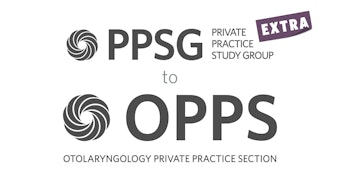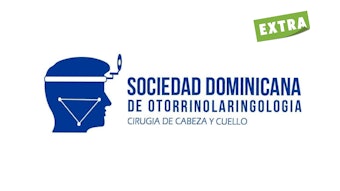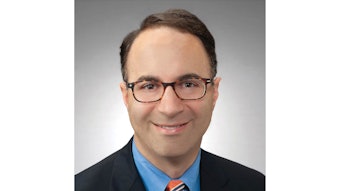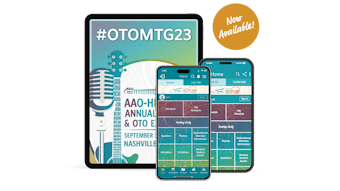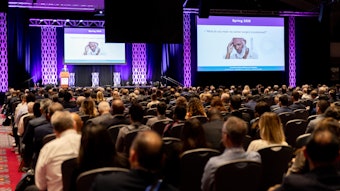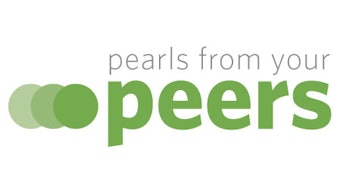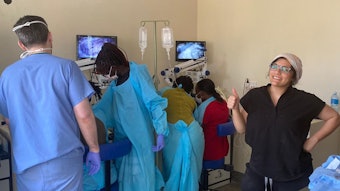In-Office Therapies for Nasal Obstruction and Rhinorrhea: What Is the Evidence?
In recent years, in-office rhinologic therapies to relieve symptoms of nasal obstruction and rhinorrhea have grown in popularity. Review current trends and explore the evidence for several commonly performed in-office nasal interventions.
Victoria S. Lee, MD, Jacquelyn K. Callander, MD, and Elisabeth H. Ference, MD, members, and Michael J. Brenner, MD, Chair, Outcomes Research and Evidence-Based Medicine Committee
Therapies for Nasal Obstruction
Radiofrequency Ablation and Coblation of Inferior Turbinate Tissue
Studies have demonstrated similar efficacy of RFA and coblation, although efficacy compared to microdebrider-assisted submucous resection remains controversial. Some studies indicated superiority of microdebrider-assisted submucous resection while others showed similar responses.2,3 Two randomized clinical trials (RCTs) found that microdebrider-assisted submucous resection and RFA had similar short-term efficacy, but microdebrider had higher long-term efficacy at three months and two years.4,5 This difference was not seen in a recent RCT comparing microdebrider-assisted versus coblation-assisted turbinoplasty, though patients were only followed for three months.6 Differences in technique may account for variable study outcomes.7 A recent study of RFA outcomes demonstrated efficacy up to five years posttreatment.8 RFA and coblation are minimally invasive options more conducive to in-office application due to patient tolerance relative to microdebrider-assisted submucous resection.
Radiofrequency Ablation of Septal Swell Body
The septal swell body has similarities to inferior turbinate vasoerectile tissue, and its potential role in nasal obstruction is becoming more widely accepted. Studies showed patients with septal swell body hypertrophy limiting visualization of the middle turbinate by >50% had lower Nasal Obstruction Symptom Evaluation (NOSE) scores three months post-RFA treatment of the swell body.9,10 One RCT demonstrated improvement of nasal obstruction when the septal swell body was treated via RFA with inferior turbinate reduction, compared to turbinate reduction alone.11
Radiofrequency Ablation of Nasal Valve
Nasal valve collapse is another common cause of nasal obstruction. Functional rhinoplasty or septorhinoplasty is the most established approach to treating the nasal valve.12 Recently however, RFA treatment at the junction of the upper and lower lateral cartilages on the lateral nasal wall was described as a safe and effective alternative in appropriate patients.13-15 Even modest increases to nasal airway volume (7%) after treatment with RFA may lead to subjective symptomatic improvement.16 A multicenter RCT of a temperature-controlled radiofrequency device (VivAer®) demonstrated superiority to sham treatment through 12 months posttreatment, and improved NOSE scores (mean difference of 45 points) without adverse events.17 Other studies demonstrated efficacy of RFA of the lateral nasal wall for nasal obstruction for up to two years posttreatment.18,19 This treatment may provide an in-office option for internal nasal valve collapse, but further studies are needed comparing RFA to other minimally invasive nasal valve collapse interventions and to rhinoplasty or septorhinoplasty.
Bioabsorbable Implant (LATERA®)
While nasal valve compromise can be caused by problems with any component of the lower two thirds of the nose, lateral wall insufficiency causing internal nasal valve collapse remains one of the most common and recalcitrant causes of obstruction.20 Prior to the U.S. Food and Drug Administration’s (FDA) approval of a bioabsorbable nasal implant, the only alternatives to conventional surgery for nasal valve collapse included nasal strips, stents, or dilators. This implant is made of 70:30 poly (L-lactide): poly (D-lactide) and can be implanted in-office via endonasal approach. It is designed to lie over the lateral nasal bone and extend caudally to support the lateral nasal sidewall.
Initial studies of LATERA® demonstrate device safety, feasibility of in-office placement, and efficacy based on reduction of NOSE scores with mean differences of 40-47 points. Results are maintained over follow-up periods of 6-24 months.21-24 A multicenter, single-blinded RCT comparing placement of the bioabsorbable nasal implant to sham in 137 patients showed a significant change in NOSE score of −42.4 ± 23.4 in the treatment group compared with −22.7 ± 27.9 in the sham group three months posttreatment. The significant improvement in the study group supports the role of the implant in supporting the lateral nasal sidewall; however, the clinically relevant improvement in the sham group could indicate there is some benefit from fibrosis secondary to cannula insertion, in addition to the role of placebo-effect.25
Reported side effects and adverse events associated with bioabsorbable nasal implants are rare. A recent meta-analysis reported a 5% adverse event rate, without major complications.26 The most frequent complication was need for implant removal (6%), with other reported side effects including postoperative site pain, foreign body sensation, localized swelling, and mucosal infection.26 A study of the FDA’s Manufacturer and User Facility Device Experience database for adverse events associated with the implant between March 2017 and April 2022 identified additional adverse events not reported in prior studies, including abscess, implant protrusion, and failure of resorption with the potential for associated chronic inflammation.27
While LATERA® can be employed intra-operatively with other procedures to address nasal obstruction, a key benefit of the bioabsorbable nasal implant is in-office placement. The ease of use in the office avoids the need for operative intervention in patients with isolated nasal valve collapse and offers a viable treatment option for poor surgical candidates. More sham-controlled studies are needed to determine the long-term efficacy and specific benefits of this implant.
Therapies for Rhinorrhea
Radiofrequency (RhinAer®)
Radiofrequency using a controlled temperature is designed to allow posterior nerve neurolysis with limited damage to the overlying mucosa and surrounding tissue. This treatment is often performed using topical anesthetic applied to the middle meatus and submucosal injection of lidocaine with or without epinephrine. Therapy is directed along the course of the posterior nasal nerve, treating the area of mucosa between the posterior middle meatus and the superior inferior turbinate. Energy delivered into the tissue is controlled by continuous monitoring of the targeted area and varying output to maintain a tissue temperature of 60 degrees Celsius.
One randomized controlled study and multiple cohort studies support the efficacy of the technique. A prospective multicenter randomized controlled trial, single-blinded with activation of the device in 2:1 randomization, found a larger rate of response (defined as a >30% improvement in Total Nasal Symptom Score [TNSS]) and greater decrease in the TNSS in the active treatment compared to the sham control group at three months.28 Interestingly, pain was not significantly different between the treatment and sham groups immediately post procedure or at three months. In a follow-up study, patients were unblinded at three months and allowed to cross over to the active treatment arm.29 Results showed that the initial active treatment arm had a responder rate of 81% at 12 months, with similar results at six months since treatment in the cross over group.
Cohort studies had similar results. Ehmer, et al. conducted a cohort study of 50 patients and demonstrated a durable, statistically significant improvement in rhinorrhea, nasal congestion, and postnasal drainage at 52 weeks, with reductions in the TNSS.30 There was a low rate of adverse events, mainly involving post-procedural oropharyngeal discomfort. Lee, et al. found similar findings in a large multicenter cohort study of 129 patients with chronic rhinitis at six months, with 84% of patients at six months showing at least a minimal clinically important difference in TNSS with no headaches or other significant pain-related adverse events.31 None of the studies dictated medication use at any time during the trials as part of pragmatic study designs, and all included patients with both allergic and nonallergic rhinitis.
These studies show that radiofrequency ablation of the posterior nerve may reduce symptom burden of patients with chronic rhinitis for at least one year post treatment. A pooled analysis found that radiofrequency neurolysis also decreased postnasal drainage and chronic cough at six months, symptoms not captured in the TNSS score alone.32
Cryotherapy (ClariFix®)
Cryotherapy involves the direct application of cold to disrupt the posterior nasal nerve. The procedure can be performed in the office with a topical anesthetic and uses a handheld, endoscopically placed device, which was FDA approved in 2016. After the cryogen is inserted into the handle, the probe tip is placed in the posterior nasal nerve area under endoscopic visualization; once the surgeon engages the trigger, nitrous oxide cryogen is delivered to the probe tip in a closed system. The probe tip’s surface reaches -60 to -80 degrees Celsius, achieving approximately -20 degrees Celsius cryoablation to a depth of 3 millimeters. Per manufacturer’s instructions, each side of the nose is typically treated with a 30-second freeze/60-second thaw cycle with a second cycle per surgeon discretion.
Multiple single-arm studies have demonstrated favorable results and side effect profile. Hwang, et al. initially published a pilot study demonstrating safety and feasibility.33 A follow-up study reported significant improvements in reflective TNSS up to nine months post-procedure in a single cohort of 98 patients.34 Ow, et al. reported data for 91 patients through 12-month and 57 patients through 24-month timepoints; there were significant improvements in the reflective TNSS at all time points compared to baseline, with greater than 80% of participants achieving the minimal clinically important difference.35 A systematic review and meta-analysis found significant pooled improvements in reflective TNSS comparing one-month and three-month post-procedure timepoints to baseline, with the most common adverse effects being surgical site pain (40%), headache (18%), oral numbness (11%), and sinusitis (4%).36
Del Signore, et al. performed a patient-blinded, randomized, sham-controlled trial, in patients with moderate-to-severe symptoms of chronic rhinitis; 57% and 43% of patients had nonallergic and allergic rhinitis, respectively. The primary endpoint was the percentage of responders (≥30% reduction in reflective TNSS relative to baseline) at 90 days; the percentage of responders was significantly better in the cryotherapy arm (73.4%, 47 of 64) compared with the sham arm (36.5%, 23 of 63). One serious procedure-related event was reported, an anxiety/panic attack while still in clinic after a successful procedure. Additionally, 35 patients (32 active, 3 sham) reported non-serious, procedure-related adverse events, with surgical site pain/discomfort and headache being most common.37 An indirect treatment comparison between cryotherapy and radiofrequency treatment to the posterior nasal nerve was performed using their respective sham-control randomized studies. The therapies had similar efficacy, with neither found to be superior.38
Conclusions
There are a variety of in-office options available for the treatment of nasal obstruction (related to inferior turbinate hypertrophy, septal swell bodies, or nasal valve collapse) and rhinorrhea (related to chronic rhinitis). Literature to date consistently supports the safety, feasibility, and efficacy of several novel devices for in-office use (VivAer®, LATERA®, RhinAer®, ClariFix®), though it is important to note these studies have largely been funded by the device companies. Although most studies are single cohorts, there is at least one sham-controlled randomized study for each therapy. Although preliminary experience is encouraging, there remains a need for head-to-head randomized trials comparing these modalities and studies designed to identify predictors of treatment response.
The authors have no relevant conflicts of interest to disclose.
References
- Clark DW, Del Signore AG, Raithatha R, Senior BA. Nasal airway obstruction: Prevalence and anatomic contributors. Ear Nose Throat J. 2018;97(6):173-176. doi: 10.1177/014556131809700615.
- Passali D, Loglisci M, Politi L, Passali GC, Kern E. Managing turbinate hypertrophy: Coblation vs. radiofrequency treatment. Eur Arch Otorhinolaryngol. 2016;273(6):1449-1453. doi: 10.1007/s00405-015-3759-6.
- Zhang K, Pipaliya RM, Miglani A, Nguyen SA, Schlosser RJ. Systematic review of surgical interventions for inferior turbinate hypertrophy. Am J Rhinol Allergy. 2023;37(1):110-122. doi: 10.1177/19458924221134555.
- Liu C, Tan C, Lee F, Lin K, Huang H. Microdebrider-assisted versus radiofrequency-assisted inferior turbinoplasty. Laryngoscope. 2009;119(2):414-418. doi: 10.1002/lary.20088.
- Cingi C, Ure B, Cakli H, Ozudogru E. Microdebrider-assisted versus radiofrequency-assisted inferior turbinoplasty: A prospective study with objective and subjective outcome measures. Acta Otorhinolaryngol Ital. 2010;30(3):138-143.
- Singh S, Ramli RR, Wan Mohammad Z, Abdullah B. Coblation versus microdebrider-assisted turbinoplasty for endoscopic inferior turbinates reduction. Auris Nasus Larynx. 2020;47(4):593-601. doi: 10.1016/j.anl.2020.02.003.
- Utley DS, Goode RL, Hakim I. Radiofrequency energy tissue ablation for the treatment of nasal obstruction secondary to turbinate hypertrophy. Laryngoscope. 1999;109(5):683-686. doi: 10.1097/00005537-199905000-00001.
- Sleurs K, Postelmans J, Smit JV. Radiofrequency ablation for inferior turbinate hypertrophy: Predictive factors for short and long-term outcomes. Ann Otol Rhinol Laryngol. 2023;132(8):888-894. doi: 10.1177/00034894221121407.
- Kim SJ, Kim HT, Park YH, Kim JY, Bae JH. Coblation nasal septal swell body reduction for treatment of nasal obstruction: A preliminary report. Eur Arch Otorhinolaryngol. 2016;273(9):2575-2578. doi: 10.1007/s00405-016-3946-0.
- Pritikin J, Silvers S, Rosenbloom J, et al. Temperature-controlled radiofrequency device treatment of septal swell bodies for nasal airway obstruction: An open-label, single arm multicenter study. Int Forum Allergy Rhinol. 2023. doi: 10.1002/alr.23156.
- Yu MS, Kim J, Kim B, Kang S, Lim DJ. Feasibility of septal body volume reduction for patients with nasal obstruction. Laryngoscope. 2015;125(7):1523-1528. doi: 10.1002/lary.25154.
- Samra S, Steitz JT, Hajnas N, Toriumi DM. Surgical management of nasal valve collapse. Otolaryngol Clin North Am. 2018;51(5):929-944. doi: 10.1016/j.otc.2018.05.009.
- Han JK, Silvers SL, Rosenthal JN, McDuffie CM, Yen DM. Outcomes 12 months after temperature-controlled radiofrequency device treatment of the nasal valve for patients with nasal airway obstruction. JAMA Otolaryngol Head Neck Surg. 2022;148(10):940-946. doi: 10.1001/jamaoto.2022.2293.
- Brehmer D, Bodlaj R, Gerhards F. A prospective, non-randomized evaluation of a novel low energy radiofrequency treatment for nasal obstruction and snoring. Eur Arch Otorhinolaryngol. 2019;276(4):1039-1047. doi: 10.1007/s00405-018-05270-y.
- Jacobowitz O, Driver M, Ephrat M. In-office treatment of nasal valve obstruction using a novel, bipolar radiofrequency device. Laryngoscope Investig Otolaryngol. 2019;4(2):211-217. doi: 10.1002/lio2.247.
- Wu Z, Krebs JP, Spector BM, Otto BA, Zhao K, Farag AA. Regional peak mucosal cooling predicts radiofrequency treatment outcomes of nasal valve obstruction. Laryngoscope. 2021;131(6):E1760-E1769. doi: 10.1002/lary.29223.
- Silvers SL, Rosenthal JN, McDuffie CM, Yen DM, Han JK. Temperature-controlled radiofrequency device treatment of the nasal valve for nasal airway obstruction: A randomized controlled trial. Int Forum Allergy Rhinol. 2021;11(12):1676-1684. doi: 10.1002/alr.22861.
- Ephrat M, Jacobowitz O, Driver M. Quality-of-life impact after in-office treatment of nasal valve obstruction with a radiofrequency device: 2-year results from a multicenter, prospective clinical trial. Int Forum Allergy Rhinol. 2021;11(4):755-765. doi: 10.1002/alr.22667.
- Yao W, Pritikin J, Sillers M, Barham H. Two‐year outcomes of temperature‐controlled radiofrequency device treatment of the nasal valve for patients with nasal airway obstruction. Laryngoscope Investigative Otolaryngology. 2023. doi: 10.1002/lio2.1089.
- Rhee JS, Weaver EM, Park SS, et al. Clinical consensus statement: Diagnosis and management of nasal valve compromise. Otolaryngol Head Neck Surg. 2010;143(1):48-59. doi: 10.1016/j.otohns.2010.04.019.
- San Nicolo M, Stelter K, Sadick H, Bas M, Berghaus A. Absorbable implant to treat nasal valve collapse. Facial Plast Surg. 2017;33(2):233-240. doi: 10.1055/s-0037-1598655.
- San Nicolo M, Stelter K, Sadick H, Bas M, Berghaus A. A 2-year follow-up study of an absorbable implant to treat nasal valve collapse. Facial Plast Surg. 2018;34(5):545-550. doi: 10.1055/s-0038-1672213.
- Stolovitzky P, Sidle DM, Ow RA, Nachlas NE, Most SP. A prospective study for treatment of nasal valve collapse due to lateral wall insufficiency: Outcomes using a bioabsorbable implant. Laryngoscope. 2018;128(11):2483-2489. doi: 10.1002/lary.27242.
- Sidle DM, Stolovitzky P, Ow RA, et al. Twelve-month outcomes of a bioabsorbable implant for in-office treatment of dynamic nasal valve collapse. Laryngoscope. 2020;130(5):1132-1137. doi: 10.1002/lary.28151.
- Stolovitzky P, Senior B, Ow RA, Mehendale N, Bikhazi N, Sidle DM. Assessment of bioabsorbable implant treatment for nasal valve collapse compared to a sham group: A randomized control trial. Int Forum Allergy Rhinol. 2019;9(8):850-856. doi: 10.1002/alr.22362.
- Kim DH, Lee HH, Kim SH, Hwang SH. Effectiveness of using a bioabsorbable implant (latera) to treat nasal valve collapse in patients with nasal obstruction: Systemic review and meta-analysis. Int Forum Allergy Rhinol. 2020;10(6):719-725. doi: 10.1002/alr.22543.
- Wilkins SG, Sheth AH, Kayastha D, et al. Adverse events associated with bioabsorbable nasal implants: A MAUDE database analysis. Otolaryngol Head Neck Surg. 2023;168(5):1253-1257. doi: 10.1002/ohn.227.
- Stolovitzky JP, Ow RA, Silvers SL, Bikhazi NB, Johnson CD, Takashima M. Effect of radiofrequency neurolysis on the symptoms of chronic rhinitis: A randomized controlled trial. OTO Open. 2021;5(3):2473974X211041124. doi: 10.1177/2473974X211041124.
- Takashima M, Stolovitzky JP, Ow RA, Silvers SL, Bikhazi NB, Johnson CD. Temperature-controlled radiofrequency neurolysis for treatment of chronic rhinitis: 12-month outcomes after treatment in a randomized controlled trial. Int Forum Allergy Rhinol. 2023;13(2):107-115. doi: 10.1002/alr.23047.
- Ehmer D, McDuffie CM, McIntyre JB, et al. Long-term outcomes following temperature-controlled radiofrequency neurolysis for the treatment of chronic rhinitis. Allergy Rhinol (Providence). 2022;13:21526575221096045-Dec. doi: 10.1177/21526575221096045.
- Lee JT, Abbas GM, Charous DD, et al. Clinical and quality of life outcomes following temperature-controlled radiofrequency neurolysis of the posterior nasal nerve (RhinAer) for treatment of chronic rhinitis. Am J Rhinol Allergy. 2022;36(6):747-754. doi: 10.1177/19458924221109987.
- Gorelik D, Ahmad JG, Razmi SE, et al. Postnasal drip and chronic cough in patients with chronic rhinitis treated with temperature-controlled radiofrequency neurolysis. Int Forum Allergy Rhinol. 2023. doi: 10.1002/alr.23238.
- Hwang PH, Lin B, Weiss R, Atkins J, Johnson J. Cryosurgical posterior nasal tissue ablation for the treatment of rhinitis. Int Forum Allergy Rhinol. 2017;7(10):952-956. doi: 10.1002/alr.21991.
- Chang MT, Song S, Hwang PH. Cryosurgical ablation for treatment of rhinitis: A prospective multicenter study. Laryngoscope. 2020;130(8):1877-1884. doi: 10.1002/lary.28301.
- Ow RA, O'Malley EM, Han JK, Lam KK, Yen DM. Cryosurgical ablation for treatment of rhinitis: Two-year results of a prospective multicenter study. Laryngoscope. 2021;131(9):1952-1957. doi: 10.1002/lary.29453.
- Young K, Bulosan H, Kejriwal S, et al. Efficacy of cryoablation on chronic rhinitis management: A systematic review and meta-analysis. Am J Rhinol Allergy. 2023;37(4):502-511. doi: 10.1177/19458924231152331.
- Del Signore AG, Greene JB, Russell JL, Yen DM, O'Malley EM, Schlosser RJ. Cryotherapy for treatment of chronic rhinitis: 3-month outcomes of a randomized, sham-controlled trial. Int Forum Allergy Rhinol. 2022;12(1):51-61. doi: 10.1002/alr.22868.
- Gorelik D, Choi A, Desisto N, et al. Indirect comparison of the efficacy of radiofrequency neurolysis and cryotherapy in the treatment of chronic rhinitis. Int Forum Allergy Rhinol. 2023;13(2):175-178. doi: 10.1002/alr.23068.


